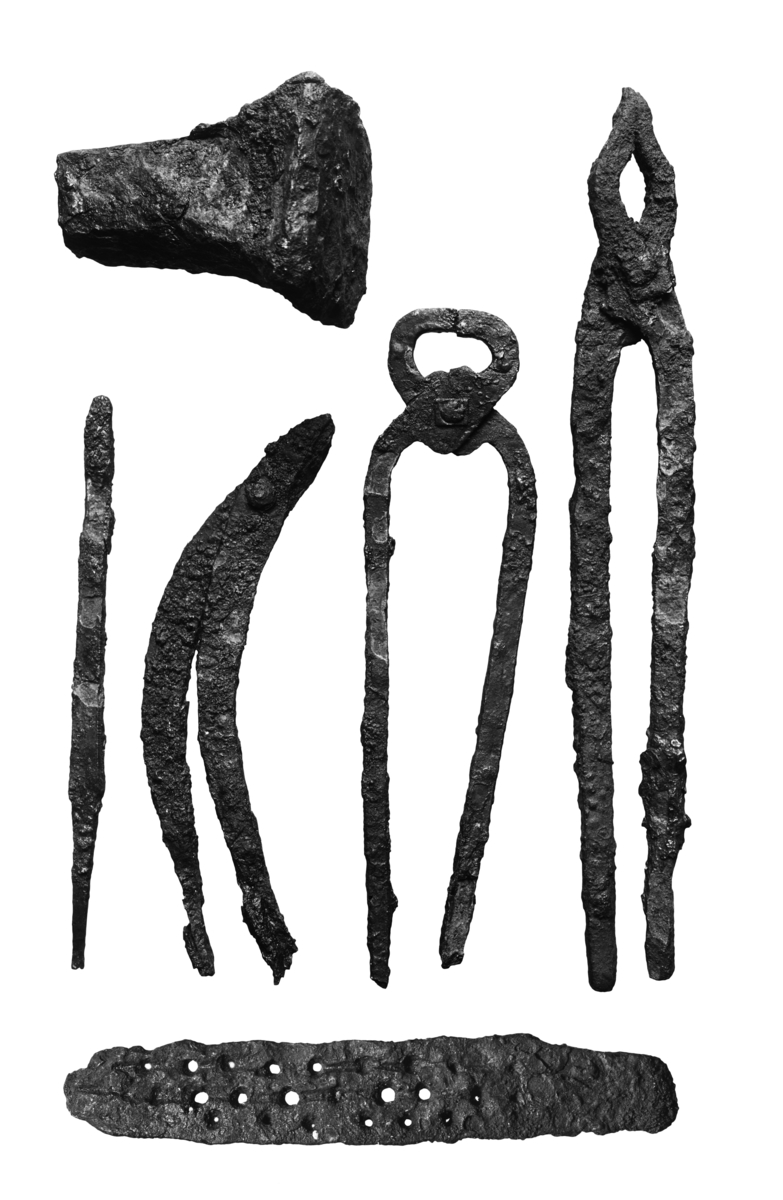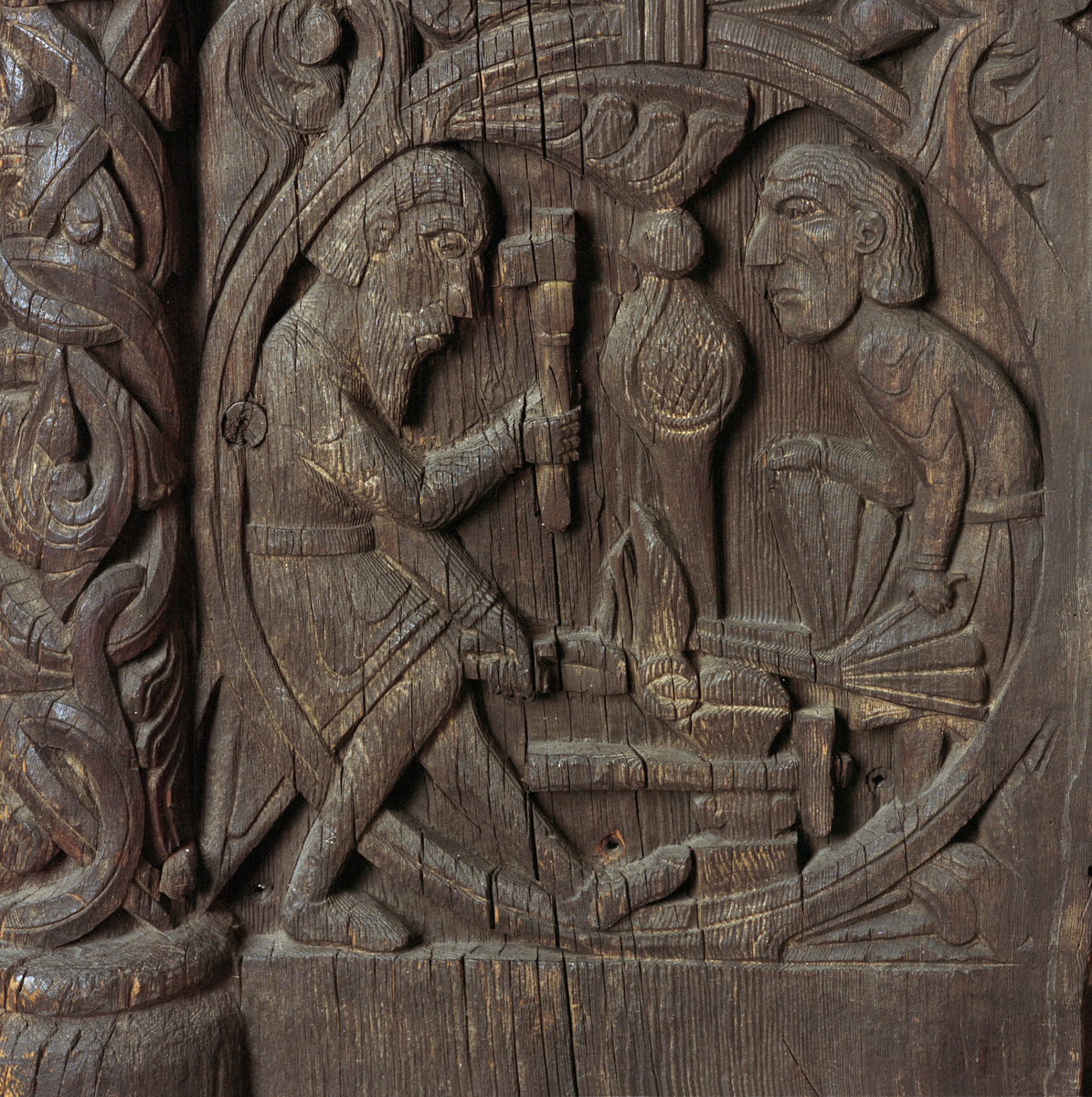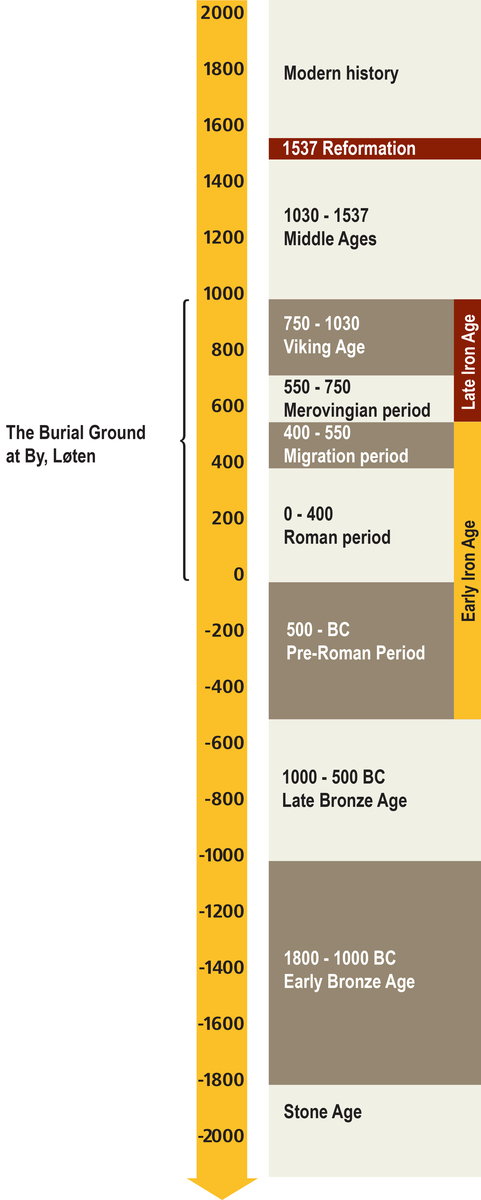Viking Age Horse Burials
Nicolaysens excavations uncovered three Viking Age burials in this cairn dating to 900 – 950 A.D. Among the conventional arms and jewelry, horse gear was found in two of the graves. One rider had been buried alongside a fully equipped horse, and the other with horse tack and riding equipment: stirrups, spurs, bit and bridle, horseshoes, collar bell, traces and hooks. Artifacts typically assigned only to a few sworn and powerful individuals, connecting the cairn to the elite of society.
The Viking Age was defined by regional chieftains fighting over power resulting in abrupt shifts in political alliances. The Horse Burials can be related to a growing central authority gaining strength and control of this area. There are fifteen known horse burials in Hedmark, from which five are located in the municipality of Løten. They are interpreted by some scholars as belonging to estates in alliance with the aspiring king, while others view them as demonstrative monuments raised by the opposing powers.
The Blacksmiths grave
One of the Horse Burials also contains the complete tool set of a blacksmith. The blacksmith played an important part in Iron Age society. He provided tools for everyday use, as well as weapons and jewelry demanded by kings and chieftains displaying wealth and exerting power. Accordance to a blacksmith was one of the king’s most important relations. In norse mythology the blacksmith is presented as a mysterious character with supernatural powers related to fire, transformation, runes and exotic languages. Regin, the blacksmith who forges the powerful sword with which Sigurd kills Fåvne, the dragon, is described as extraordinary, wise and hard, a dwarf of shape and more cunning than others (Reginsmål, Volungesaga).




